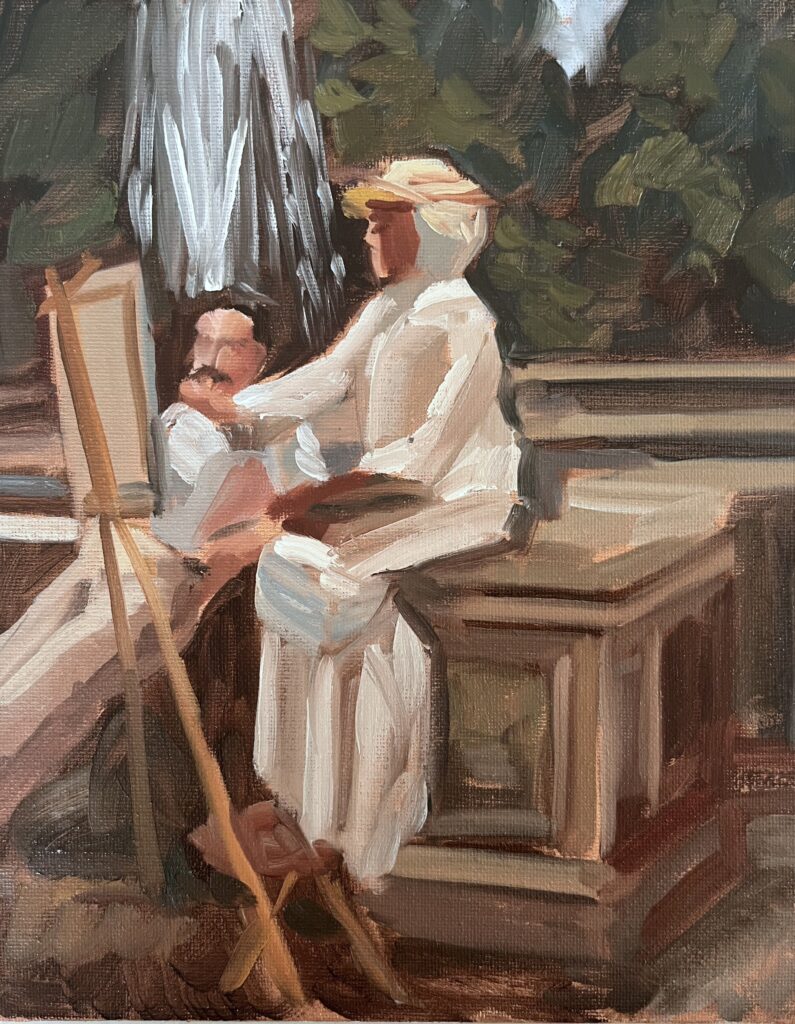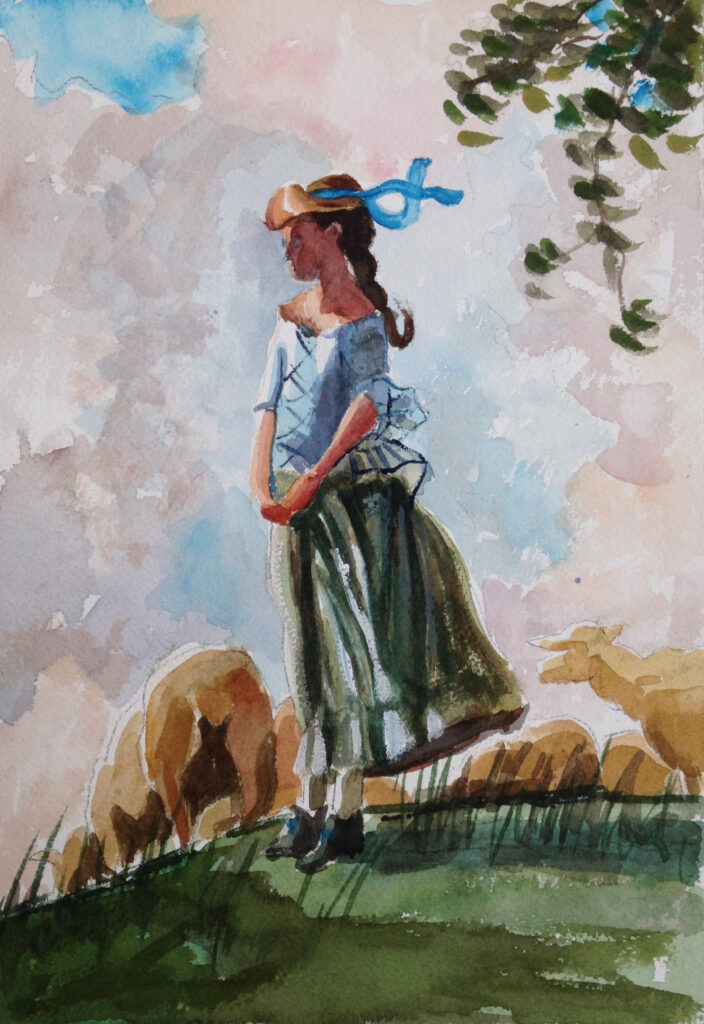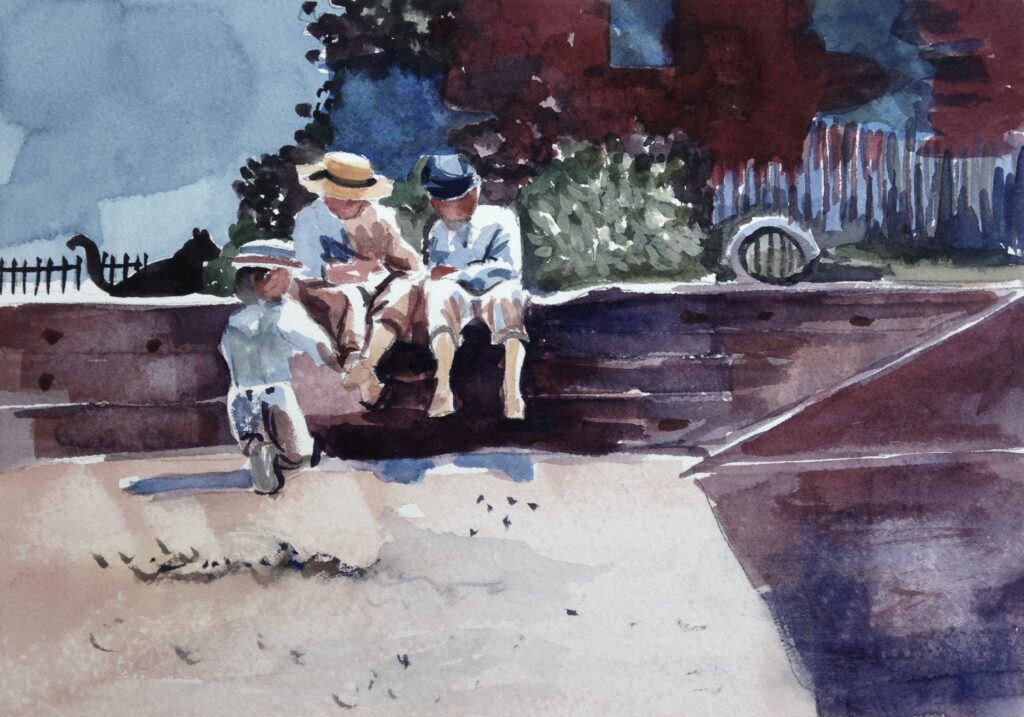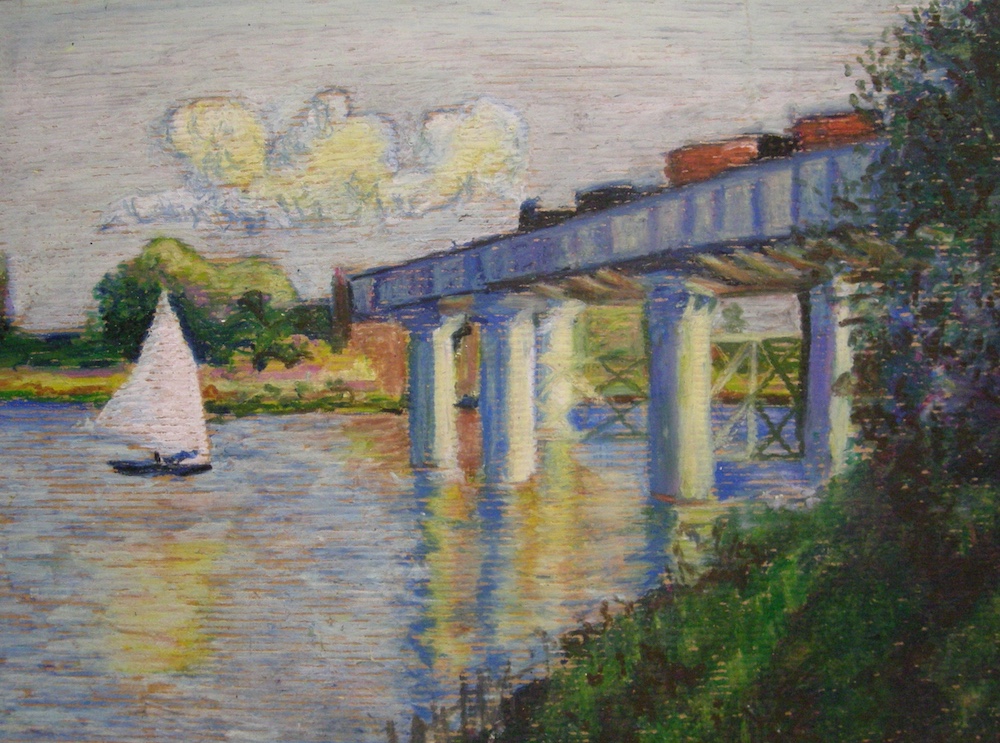
Today, I want to share a transformative practice that has profoundly enriched my artistic journey: creating master copies. Recently, I embarked on a master copy of John Singer Sargent’s “The Fountain,” and the experience was nothing short of enlightening.
Embracing the Masters: A Journey of Artistic Growth


As you can see in my master copies in this blog post, my whole goal is not to painstakingly copy, in fact they are very loosely rendered and I often put a time constraint such as under two hours and in a much smaller format, usually 8 x 10″ or smaller. I find these studies to be so reward, to spend time not just starring at the painting but having that inner dialog of “what color is this that he mixed? or look at the way he handled the foliage in the background. I get so much more out of these master copies than just the quick glance through an art book.
The Allure of John Singer Sargent
John Singer Sargent’s work has always captivated me. His ability to capture light, texture, and the essence of his subjects is truly mesmerizing. Back in January, I had the pleasure of visiting the MFA for the “Fashioned by Sargent” exhibition. It was an awe-inspiring experience to see his works up close. The brushwork, the fluidity, and the sheer beauty of his paintings are breathtaking. His work embodies a perfect balance of realism and impressionistic flair, which continually inspires me to push my boundaries.
The Influence of Other Masters

While Sargent holds a special place in my heart, I’ve also been deeply influenced by other great masters. Winslow Homer’s watercolors have always amazed me with their vibrant energy and atmospheric depth. I can remember back in college I had attended an exhibit of Winslow Homer at the MFA and just was captivated by his scenes. At the time I work only in watercolor and was truly one of my heroes. Years later, I had the urge to pick up my watercolor paints and brushes after perusing through a Homer book on my bookshelf. Here are three small studies I’ve done, trying to capture his unique style and technique.


Claude Monet, another favorite of mine. Monet’s ability to depict the fleeting effects of light and color in nature is something I strive to emulate. His impressionistic approach teaches us to see beyond the details and embrace the overall mood and emotion of a scene.


And last but not least for an assignment in a watercolor class I was taking at Manchester Community College back in 2006 I copied a still life by Paul Cézanne’s “Still Life with a Brown Bottle and Apples.” Cézanne’s structured yet dynamic compositions have taught me the importance of form and spatial relationships in painting.
The Power of Studying the Masters
Working at the New Britain Museum of American Art has further deepened my appreciation for this practice. Every Friday, the museum offers “Drawing with the Masters,” where visitors can sit in front of a master painting and draw in their sketchbooks. This has provided invaluable insights into the techniques and approaches of various artists.
Here are three reasons why copying master works is a fantastic idea for any artist:
- Understanding the Artist’s Palette and Brushwork: By replicating a master’s work, you gain firsthand knowledge of their color choices and brush techniques. This understanding can significantly enhance your own painting skills and stylistic development.
- Compositional Decisions: Masters like Sargent, Homer, and Monet made deliberate compositional choices that contributed to the strength and impact of their works. Studying these decisions helps us learn how to create more compelling and balanced compositions in our own art.
- Execution and Technique: It’s not about creating a painstaking replica but rather learning from the process. By engaging with the master’s execution of a piece, you can discover new methods and techniques that can be incorporated into your own work, leading to personal growth and innovation.
In conclusion, taking the time to really look and study the works of the masters is not just an exercise in replication; it’s a profound educational experience that fosters growth, understanding, and inspiration. As Sargent himself once said, “You can’t do sketches enough. Sketch everything and keep your curiosity fresh.”
Inspirational Video on John Singer Sargent’s Drawings
click the image below or go to here

Let’s continue to learn from the greats and push the boundaries of our artistic endeavors.
I would love to hear your thoughts on creating master copies. Have you created any lately? What did you learn from them? Leave a comment below and share your experience.
Keep Creating
Linda
Quick Pause: If you are new here and would like to receive my Canvas Chronicles – a Weekly newsletter which will include this Artist to Artist Challenge right in your inbox – just fill out the form below – I’m excited you’ll be joining me on this journey!
Leave a Reply